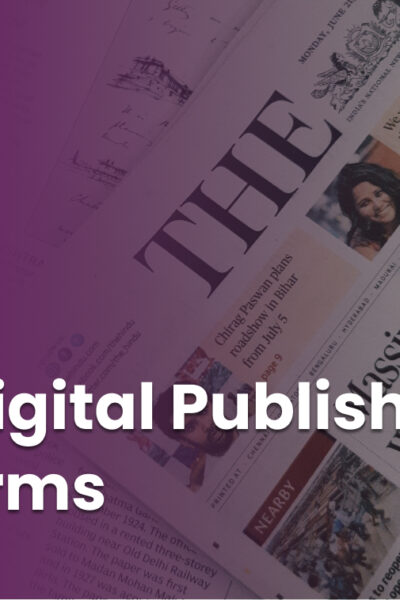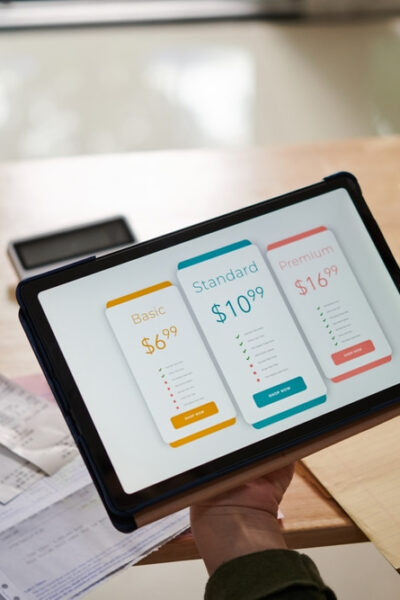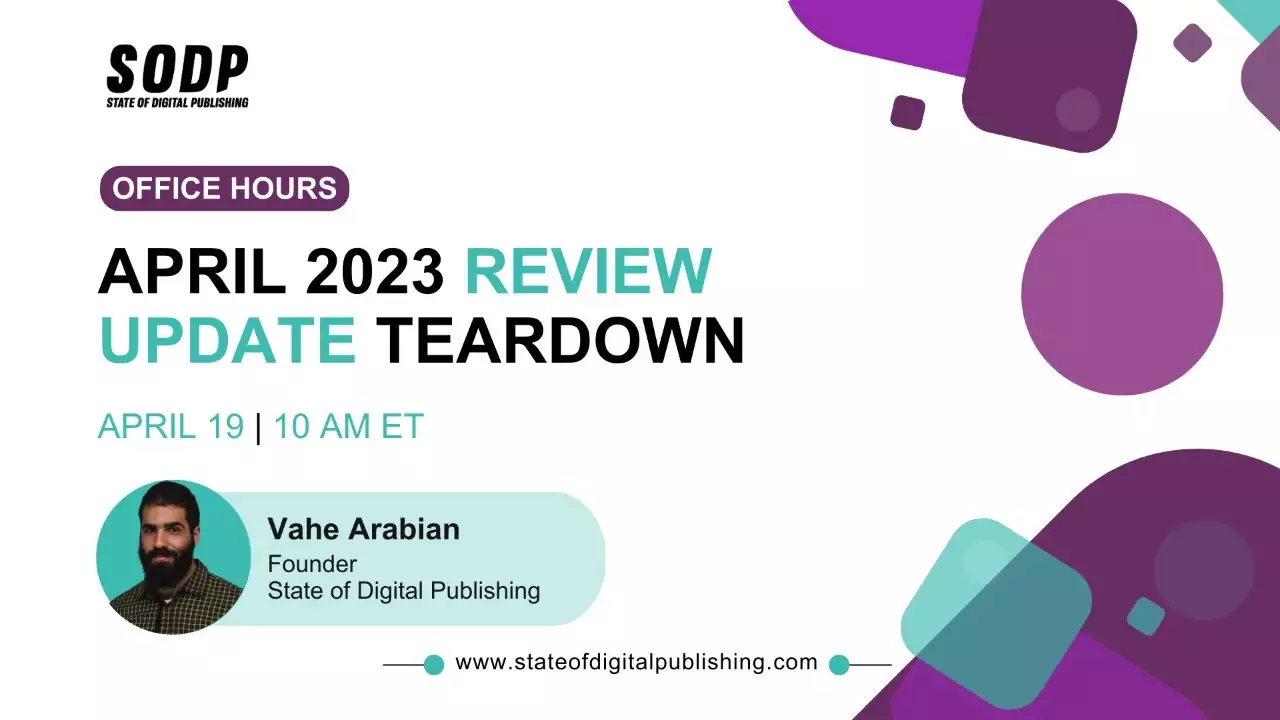If you’re thinking about implementing digital subscriptions, it’s easy to be overwhelmed by the factors and variables that go into launching, evolving and scaling the new model. To help your business thrive, you’ll need a strategy in place to help meet your goals — and a plan to optimise your results over time.
Here are 10 of my best tips to accelerate and sustain your success.
1. DON’T assume readers know about your subscription programme
DO expose visitors to paid offers
One of the biggest mistakes publishers make is not promoting subscriptions to enough of their audience. That could be because a metred paywall is set too high or in a freemium pay model there aren’t enough locked articles, or they’re not promoted in high-traffic site locations.
The pandemic made many media companies around the world realise that subscription dollars are vital to their future health, prompting them to market their subscription products in earnest. By Q4 2020, the median share of visitors seeing a paid offer was 10.9% — more than double the share in Q4 2019, according to Piano’s Spring 2021 Subscription Performance Benchmark Report.
2. DON’T allow ad-blocking visitors to dismiss whitelist request messages
DO promote “disable ad blocker or pay” offers
Although digital publishers can no longer rely solely on advertising revenue to support their business model, advertising is still an important piece of the puzzle. Unfortunately, ad-blocking technologies can put a damper on this legacy system.
To minimise ad blocking, consider implementing a hard lock on the page’s content. An offer that allows visitors to either disable their ad blocker or pay for a subscription fee can be an effective tactic to increase ad-block disablement rates. The data doesn’t lie — at Piano, we see these messages perform about 10X better than dismissible messages at pushing users to disable their ad blockers.
3. DON’T rely on third-party cookies to help you understand your audience
DO use the registration to turn anonymous visitors into known users
Third-party cookies will be phased out by 2023, so they aren’t a reliable source of information about your audience and their interests. Instead, consider the value zero- and first-party data can bring to your business. User-volunteered (zero-party) and on-site behavioural (first-party) data allow you to gain deeper insight into user interests, paving the way for dynamic paywalls, personalized experiences and content recommendations.
Encouraging existing customers to make greater use of your website is easier than attracting completely new visitors. The key is uncovering what attracted them to your site in the first place and creating an experience that readers find exciting and that taps into their passions. You can then ask them to register and provide an email address to access premium content or receive a newsletter. Once users are registered, you can use your email list to share subscriber-only content, special offers and new features with these prospects to entice conversion to a subscription. Send editorial emails that drive consumption and entice users with premium locked articles rather than sending only subscription promotions. The most effective conversion tool is the content itself.
4. DON’T ignore audience segmentation
DO personalise your on-site experience with content recommendations
Using content recommendations can give exposure to a wider set of articles, helping your audience discover content that’s relevant to them and giving those stories more discoverability on your site.
Instead of focusing on which algorithms to use or targeting content recommendations too narrowly at the outset, focus on decisions like where on your page you can host these recommendations. Widget location significantly impacts the lift, with more prominent widgets driving more engagement. For example, the right sidebar is an area to consider replacing an existing “trending” or “most read” widget with a more sophisticated selection of four or five articles personalized to the reader on an individual level.
5. DON’T rely on pageviews alone to decide when to show a paid offer
DO use subscription propensity for user targeting
At the earliest stages of their subscription journey, many websites rely on a single measure — typically pageviews — to decide when to ask users to pay. But this can block users who are unlikely to subscribe. At the same time, some users who probably would pay are allowed to keep reading uninhibited.
Instead of using this tactic, a machine learning model can tune into your website and audience to predict who’s going to subscribe and who won’t. Understanding each user’s propensity to convert helps you show the right offer at the right time to influence that desired action.
6. DON’T assume your pricing is based on what others are charging
DO determine a pricing strategy that works for your publication
The right price depends on your strategy. Do you want to maximise the number of subscribers, revenue, brand perception or some other metric? A well-designed pricing survey can help identify user price sensitivity and willingness to pay.
It’s also important to understand that consumers have set ideas about how much to pay for different products called mental accounting. Associating with a higher-priced category can help make higher prices seem fair. Peloton charges $59 per month for access to its videos because the main mental reference is a $66 per week for F45 classes (which makes $59/mo feel like a deal) rather than a streaming service (which makes $59/mo feel like highway robbery).
Finally, watch out for “price cliffs” in your business. Every product has psychological price thresholds, and they tend to occur at round numbers — like $5 or $10 for monthly, $50, $75 or $100 for annual. Above these numbers, demand drops off, so pricing just below them helps your conversion rate.
7. DON’T limit your subscription offering to only one option
DO provide a variety of offers
In most cases, offering both annual and monthly subscriptions improves performance. Although monthly subscriptions have worse retention rates than annual, they often boost total subscriptions and total revenue. The trick is getting the conversion lift from monthly offers without cannibalising too many annual sales.
Adding a third, more expensive package, or a “decoy offer,” can also create a significant performance improvement. Piano clients that have split-tested this theory have often seen their conversion rates and revenues increase by more than 50%.
8. DON’T require too many steps to convert
DO make it as easy as possible to subscribe
A significant portion of conversions comes from users who visit sites with the intent to buy. Requiring users to enter additional information and navigate through multiple steps, from signing up for an account to finding their credit card and entering the details, can often turn them off from registering on a website.
Eliminating friction is even more important on mobile, where 55% of paid offers are shown but account for only 29% of total conversion. A big reason for low mobile conversion rates is the hassle of creating an account and entering payment details, so removing as many steps as possible is key to unlocking the revenue potential of mobile audiences.
Consider options to integrate single sign-on (SSO) with existing platforms, so users aren’t required to create an entirely new account, or with instant payment options like Apple Pay that don’t require users to fish a credit card out of their wallet or purse. Make it as easy as possible to convert by placing your call to action in a highly visible location on the site and reducing the number of steps required to complete a purchase.
9. DON’T set and forget your offers or landing pages
DO use split testing to optimise your tactics
Launching a new subscription programme is no small feat, but it’s not something you can “set and forget” after the initial implementation phase. The most successful reader revenue models are those that continue to experiment and optimise their landing pages and offers.
On most sites, the highest conversion rates and largest volume of new subscriptions happen on the landing page. So it’s important to optimise performance there first. Test price, number of offers, benefits, language, design and more.
Although there are numerous things to test, don’t use too many variables at once.. For subscription conversions, which tend to be lower in volume, using one or two new variants and control can allow you to reach statistical significance as quickly as possible. We recommend testing each variable for at least two weeks.
10. DON’T chalk churned users up to a loss
DO optimise offers so churned users are convinced to re-subscribe
Churned users aren’t always a lost cause. To target this segment, start by touting your normal paid offering rather than a discount. You may eventually need to provide a discount to get additional churned users to re-subscribe, but a simple message telling the churned user that their subscription has expired that directs them to the standard offerings can have high conversion rates.
To reduce churn, add more long-term options for subscriptions. Many sites offer a 20% discount to annual vs. monthly purchasers. Bigger price differences between annual and monthly — in the range of 30% or 40% — can push more subscribers towards annual.
To reduce passive churn, one of the easiest and most effective tactics is re-attempting to charge a customer after an initial payment failure. After implementing 30-day grace periods, many publishers can successfully charge 30-40% of initially failed payments simply using retries.
DO learn from the experience of other publishers
Taking advantage of best practices and learning from other publishers’ mistakes can lay a solid foundation for your digital subscription programme. But developing a custom strategy that considers your audience and your business objectives will help you thrive now and in the future.









